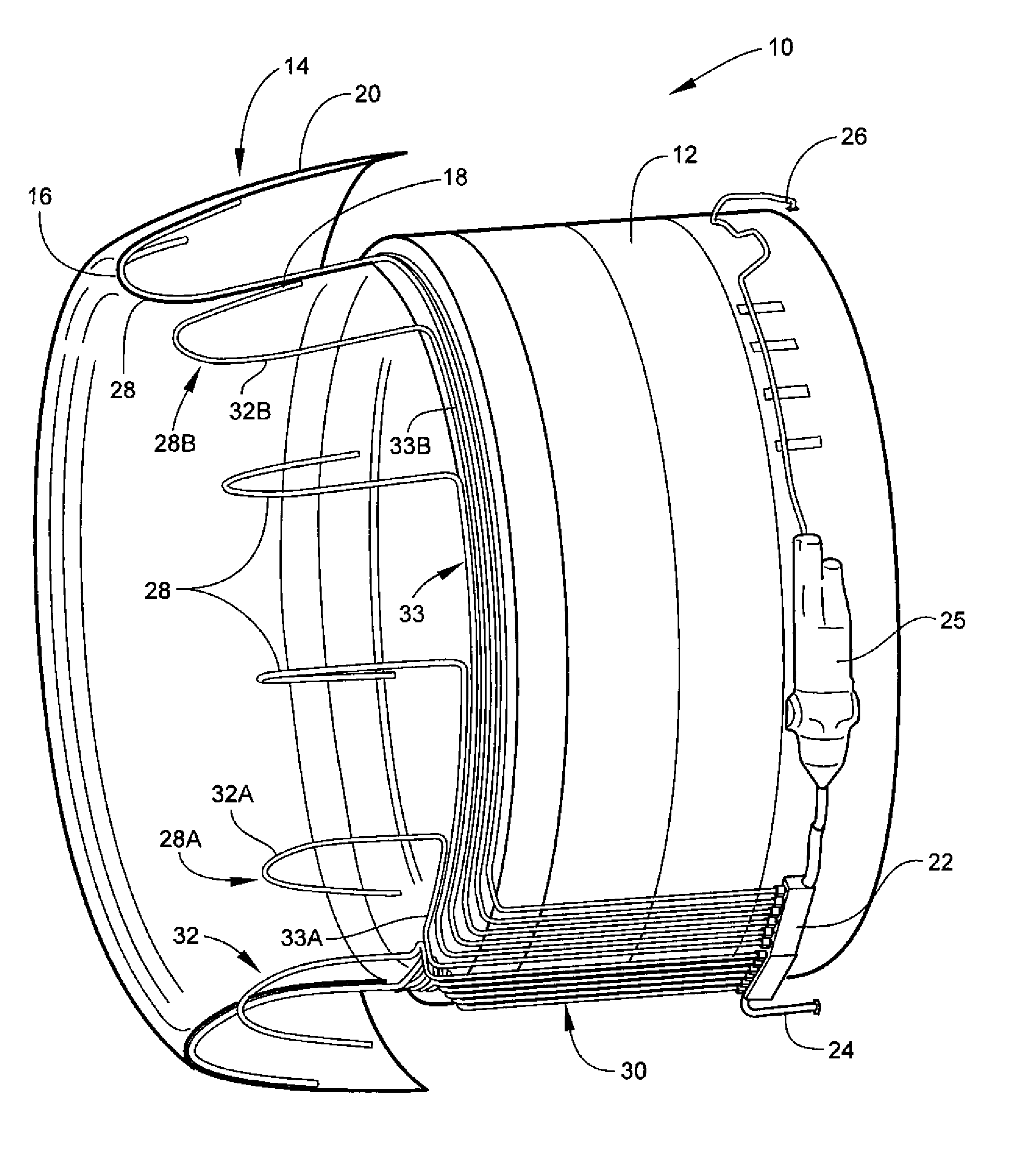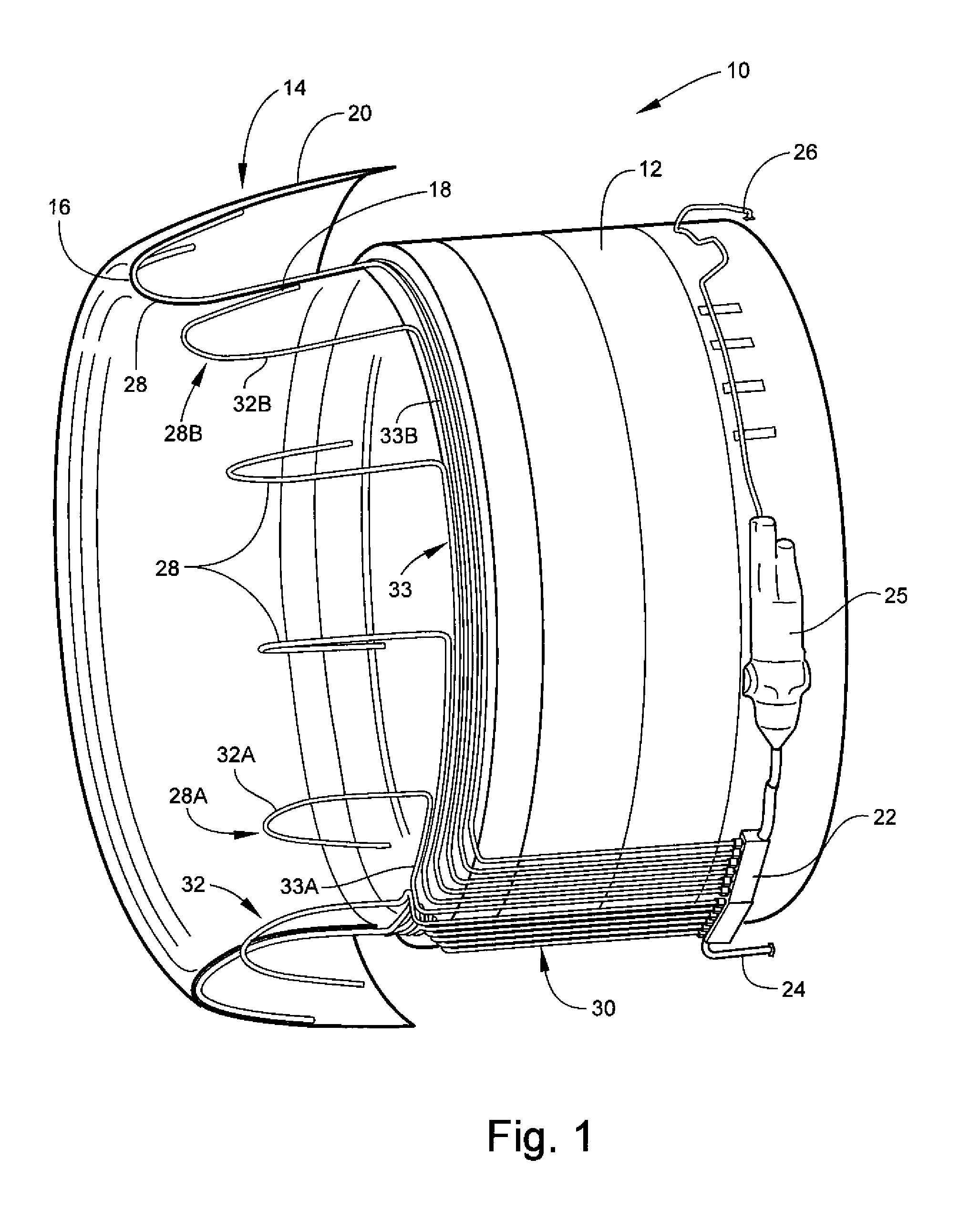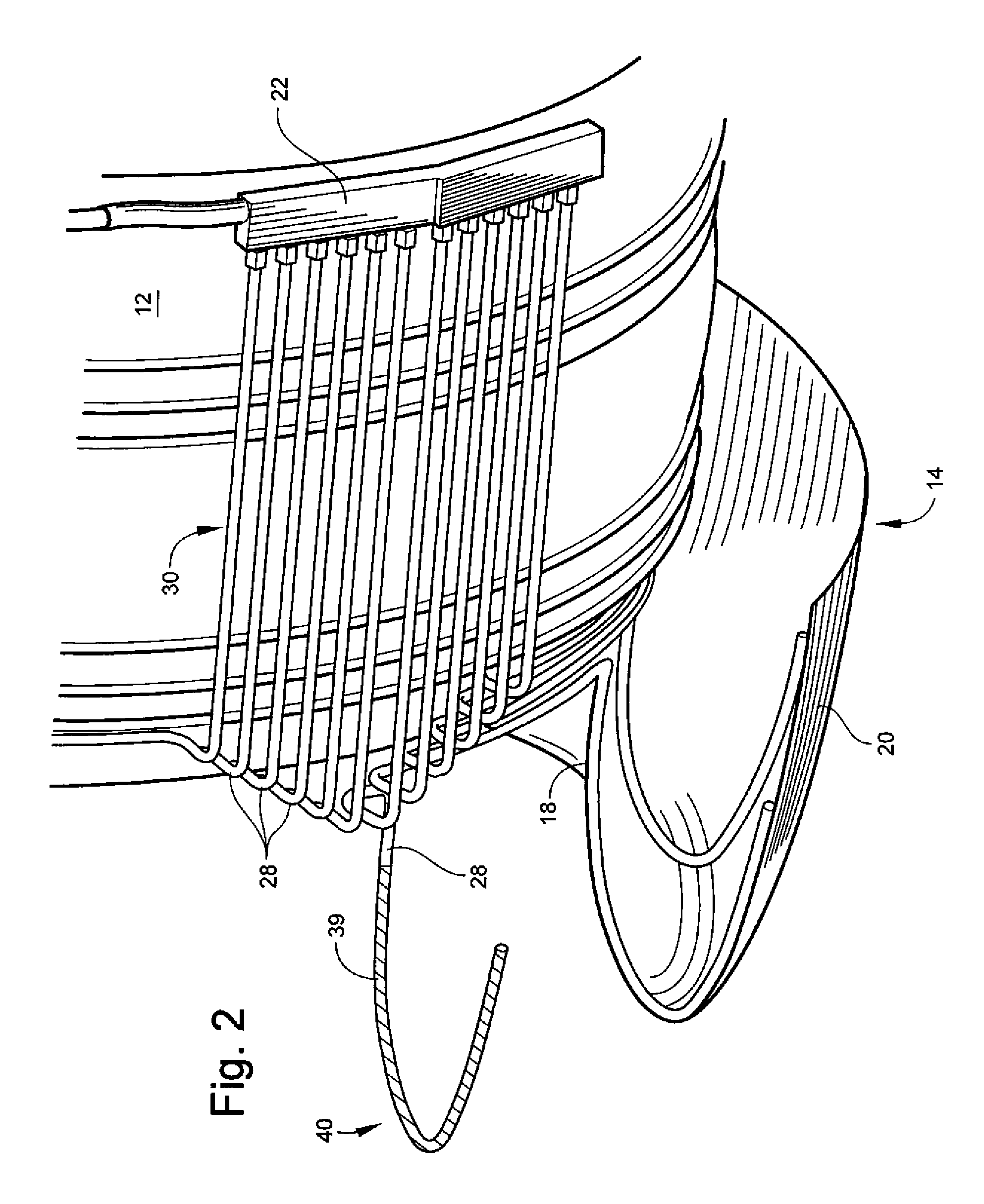Heat transfer system and method for turbine engine using heat pipes
a technology of heat transfer system and turbine engine, which is applied in the direction of machines/engines, sustainable transportation, mechanical equipment, etc., can solve the problems of pressure loss, significant fuel burn penalty, cost and weight penalties,
- Summary
- Abstract
- Description
- Claims
- Application Information
AI Technical Summary
Benefits of technology
Problems solved by technology
Method used
Image
Examples
Embodiment Construction
[0021]Referring to the drawings wherein identical reference numerals denote the same elements throughout the various views, FIGS. 1 and 2 illustrate a portion of a fan module 10 of a gas turbine engine, including an annular fan casing 12 which surrounds a rotating fan (not shown). The fan casing 12 is also surrounded by an annular fan cowling, which is not shown for clarity. An annular inlet cowling 14 is disposed forward of the fan casing 12. The inlet cowling 14 has a generally “U”-shaped cross-section with a curved portion defining an inlet lip 16, an inner wall 18 extending aft of the inlet lip 16 in a generally axial direction, and an outer wall 20 extending aft of the inlet lip 16 in a generally axial direction. The inner wall 18 forms a flowpath for air entering the fan casing 12, and the outer wall is exposed to external air flow. The present invention is equally applicable to other engine configurations lacking a fan cowling, for example pure turbojet engines or turboprops....
PUM
 Login to View More
Login to View More Abstract
Description
Claims
Application Information
 Login to View More
Login to View More - R&D
- Intellectual Property
- Life Sciences
- Materials
- Tech Scout
- Unparalleled Data Quality
- Higher Quality Content
- 60% Fewer Hallucinations
Browse by: Latest US Patents, China's latest patents, Technical Efficacy Thesaurus, Application Domain, Technology Topic, Popular Technical Reports.
© 2025 PatSnap. All rights reserved.Legal|Privacy policy|Modern Slavery Act Transparency Statement|Sitemap|About US| Contact US: help@patsnap.com



